Embark on a delightful journey through the world of chocolate with “The Chocolate Touch PDF,” a comprehensive guide exploring its history, cultural significance, and culinary delights. Discover how chocolate has shaped traditions, influenced health, and inspired creativity across generations. This PDF offers a detailed exploration of chocolate’s impact on society, its health benefits, and its role in modern cuisine, making it a must-read for chocolate enthusiasts and experts alike.
Overview of the Document
“The Chocolate Touch PDF” is a meticulously crafted document that delves into the fascinating world of chocolate, offering a holistic understanding of its significance. The document is divided into several chapters, each focusing on a unique aspect of chocolate, from its rich history to its modern-day applications. Readers will explore the cultural, culinary, and health-related dimensions of chocolate, gaining insights into its role in rituals, trade, and contemporary cuisine. The PDF also addresses sustainability and ethical practices in chocolate production, ensuring a balanced perspective. With its comprehensive structure and detailed content, “The Chocolate Touch PDF” serves as an invaluable resource for anyone seeking to understand the depth and complexity of chocolate’s impact on society and individual well-being.
Importance of the Topic
Exploring “The Chocolate Touch PDF” is essential for understanding chocolate’s profound impact on culture, health, and cuisine. Chocolate’s rich history and versatility make it a topic of universal interest, spanning centuries and continents. Its significance extends beyond taste, influencing rituals, trade, and modern culinary practices. The document highlights chocolate’s role in promoting heart health and brain function, aligning with contemporary discussions on wellness. Additionally, it addresses ethical production practices, a critical issue in today’s global market. By examining chocolate’s multifaceted nature, readers gain insights into its cultural, economic, and personal significance, making this topic both educational and engaging for a broad audience.
Structure of the PDF
“The Chocolate Touch PDF” is organized into a comprehensive, easy-to-follow structure that ensures a seamless reading experience. The document begins with an introduction, setting the stage for the exploration of chocolate’s world. It then delves into the history of chocolate, tracing its origins in ancient Mesoamerica and its evolution over time. The PDF is divided into key sections, including cultural significance, health benefits, culinary uses, sustainability practices, and future trends. Each section is further subdivided into detailed subheadings, such as antioxidants in chocolate, chocolate in modern cuisine, and fair trade practices. This logical flow ensures that readers can easily navigate through the document, gaining a holistic understanding of chocolate’s impact on society, health, and culture. The structure is designed to cater to both casual readers and experts, making it a valuable resource for all.
History of Chocolate
Chocolate’s origins trace back to ancient Mesoamerica, where cacao beans were first cultivated around 1500 BCE. The Olmec civilization prized chocolate as a sacred drink, later adopted by the Aztecs, who revered it as a luxury and currency. Its rich history spans centuries, shaping cultures and traditions worldwide.
Ancient Mesoamerican Civilizations
The history of chocolate begins with ancient Mesoamerican civilizations, such as the Olmec, Maya, and Aztecs. These cultures revered cacao beans as a divine gift, using them to create a bitter drink called xocoatl. The Olmecs are credited with domesticating cacao around 1500 BCE, while the Maya refined its preparation, often flavoring it with spices. The Aztecs later adopted chocolate, using it in rituals, as a form of currency, and as a luxury reserved for elites. Their sophisticated understanding of cacao laid the foundation for chocolate’s global spread, transforming it from a sacred Mesoamerican staple to a beloved worldwide treat.
The Process of Making Chocolate
The process of making chocolate involves several intricate steps, transforming raw cacao beans into the delicious treat we know today. It begins with harvesting cacao pods, carefully opening them to extract the beans. Fermentation follows, breaking down the beans’ complex flavors. After drying, the beans are roasted to enhance their aroma and flavor. The roasted beans are then cracked to separate the nibs, which are ground into a fine paste called chocolate liquor. This liquor is pressed to remove cocoa butter, leaving behind cocoa solids. Conching, a refining process, develops the flavor and texture. Finally, the chocolate is tempered and molded into its desired form, creating the chocolate products enjoyed worldwide.
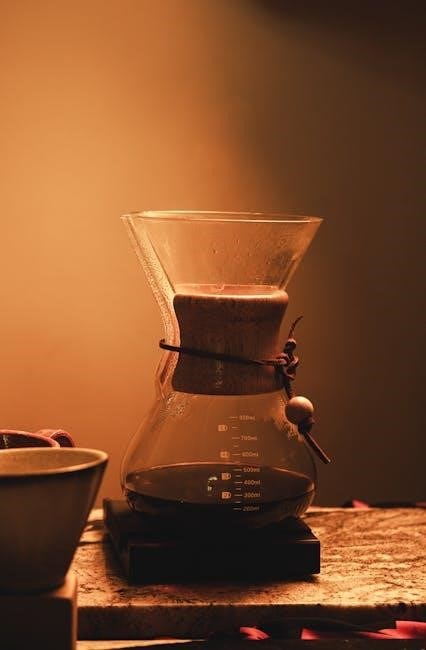
Chocolate in Ancient Rituals and Trade
Cacao beans, the source of chocolate, held immense value in ancient Mesoamerican civilizations, often used as currency and in religious rituals. The Mayans and Aztecs revered chocolate as a gift from the gods, using it in ceremonies to ensure fertility, prosperity, and divine favor. Elite classes consumed chocolate as a luxury item, often flavored with spices like chili and vanilla. Its significance extended to trade, with cacao beans serving as a primary commodity in regional commerce. This sacred drink was also believed to possess medicinal properties, further elevating its status. The cultural and economic importance of chocolate in these societies laid the foundation for its global popularity, shaping its role in modern times.
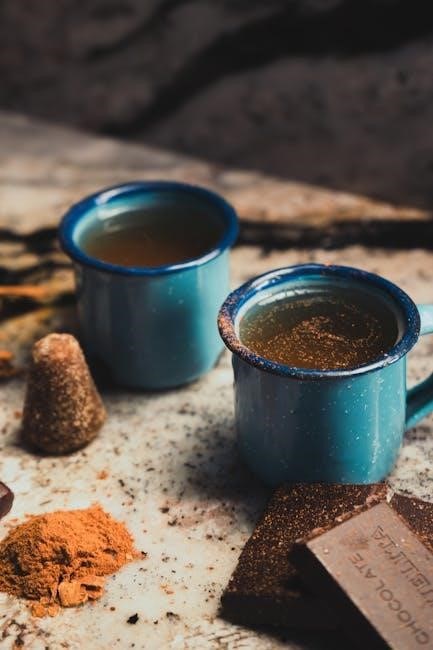
Cultural Significance of Chocolate
Chocolate holds profound cultural significance, symbolizing love, celebration, and indulgence. It bridges traditions, evokes emotions, and fosters connections, making it a universal symbol of joy and togetherness worldwide.
Chocolate in Modern Cuisine
Chocolate has evolved into a versatile ingredient in modern cuisine, transcending traditional desserts. Chefs now incorporate it into savory dishes, sauces, and marinades, adding depth and complexity to flavors. Its rich, velvety texture enhances everything from mole sauces in Mexican cuisine to glazes for meats. The rise of molecular gastronomy has further expanded its use, with chocolate foams and spheres becoming trendy. Pairing chocolate with unexpected ingredients like chili, sea salt, or citrus creates bold, innovative flavor profiles. This culinary creativity highlights chocolate’s adaptability and its enduring appeal in contemporary cooking, making it a staple in both sweet and savory dishes worldwide.
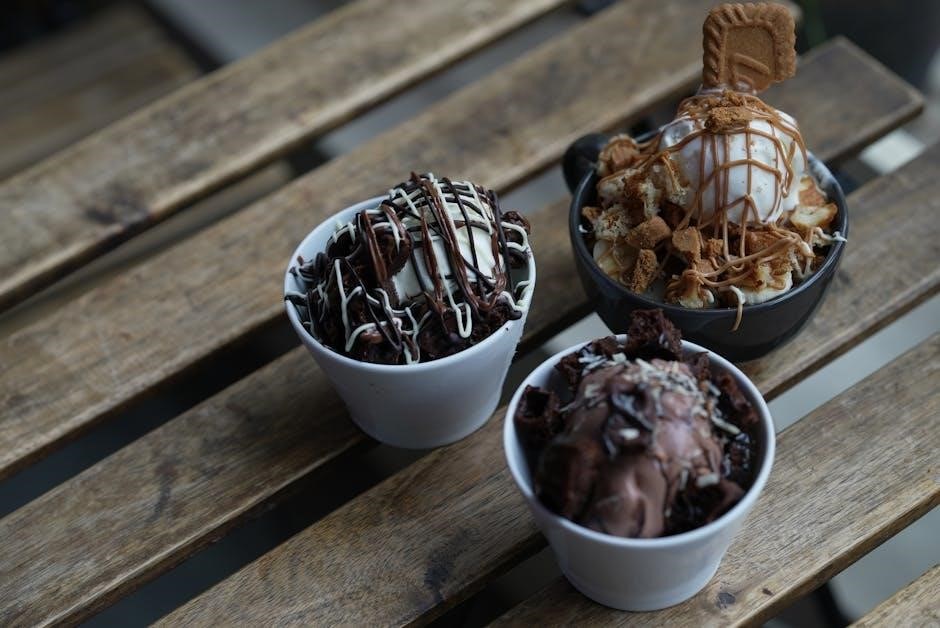
Chocolate as a Gift and Symbol

Chocolate has long been a cherished gift and symbol, representing love, gratitude, and celebration. Its rich, indulgent nature makes it a universal token of affection, often exchanged during holidays like Valentine’s Day. As a symbol, chocolate embodies luxury, comfort, and joy, transcending cultural boundaries. It is frequently used in rituals, ceremonies, and as a gesture of apology or appreciation. The act of gifting chocolate is deeply rooted in tradition, with beautifully packaged treats enhancing its appeal. Beyond its taste, chocolate carries emotional weight, making it a meaningful way to connect with others and express sentiments. Its enduring popularity as a gift underscores its significance in human relationships and celebrations.
Chocolate in Art and Literature
Chocolate has inspired countless works of art and literature, captivating imaginations with its rich flavors and cultural significance. In literature, authors like Roald Dahl in Charlie and the Chocolate Factory and Laura Esquivel in Like Water for Chocolate have used chocolate as a central theme, symbolizing indulgence, magic, and emotional depth. In art, chocolate has been depicted in still-life paintings, often representing luxury and decadence. Its velvety texture and deep colors make it a visually appealing subject. Chocolate’s role in storytelling and visual art highlights its ability to evoke emotions and sensory experiences, making it a timeless muse for creators across mediums. Its presence in art and literature reflects its enduring impact on human culture and imagination.
Health Benefits of Chocolate
Chocolate, especially dark varieties, is rich in antioxidants like flavonoids, which support heart health by improving blood flow and lowering blood pressure, promoting overall well-being.
Antioxidants in Chocolate
Chocolate, particularly dark chocolate, is a rich source of antioxidants, including flavonoids and polyphenols. These compounds help protect the body from oxidative stress caused by free radicals, which can damage cells and contribute to aging and diseases. Dark chocolate contains a higher concentration of antioxidants compared to milk chocolate due to its minimal processing and higher cocoa content. Regular consumption of dark chocolate in moderation may improve heart health, enhance cognitive function, and reduce inflammation. The antioxidants in chocolate also play a role in boosting the immune system and promoting overall well-being. Choosing high-quality, minimally processed chocolate ensures maximum antioxidant benefits.
Chocolate and Heart Health
Chocolate, particularly dark chocolate, has been linked to improved heart health due to its rich content of flavonoids. These compounds help relax blood vessels, lowering blood pressure and improving blood flow. Regular moderate consumption of dark chocolate may reduce the risk of heart disease by improving cholesterol levels and preventing blood clots. The flavonoids in chocolate also enhance nitric oxide production, which supports healthy blood vessel function. However, it’s important to choose dark chocolate with at least 70% cocoa content, as milk chocolate and white chocolate offer fewer benefits. Balancing chocolate intake with a healthy diet is key to maximizing its cardiovascular advantages.
Chocolate and Brain Function
Chocolate, particularly dark chocolate, contains compounds like flavonoids that may enhance brain function. These antioxidants improve blood flow to the brain, boosting cognitive performance and memory. The flavonoids in cocoa can also stimulate the growth of new neurons and protect against age-related cognitive decline. Additionally, chocolate contains phenylethylamine and anandamide, which are natural mood elevators that reduce stress and improve focus. Moderate consumption of dark chocolate may also lower the risk of dementia and stroke by maintaining healthy blood vessels in the brain. Overall, incorporating dark chocolate into a balanced diet can support both mental clarity and emotional well-being, making it a sweet and beneficial treat for brain health;
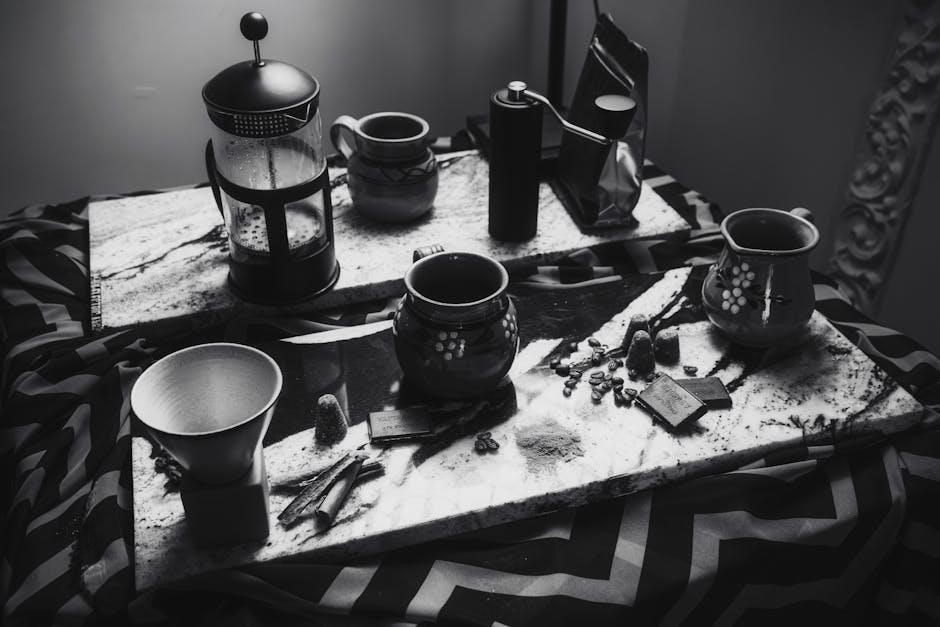
Culinary Uses of Chocolate
Chocolate is a versatile ingredient in both sweet and savory dishes, enhancing flavors in baking, sauces, and pairings with ingredients like chili or orange, adding depth and richness.
Chocolate in Baking and Cooking
Chocolate is a cornerstone in baking and cooking, adding depth and richness to countless recipes. From decadent cakes and brownies to intricate sauces, it elevates both sweet and savory dishes. Its versatility allows it to be melted, grated, or powdered, making it a key ingredient in desserts like truffles and mousse. In savory dishes, chocolate pairs surprisingly well with spices and meats, enhancing umami flavors. The process of tempering chocolate is crucial for achieving a glossy finish in baked goods. High-quality cocoa ensures a robust flavor profile, making it indispensable in professional and home kitchens alike. Its adaptability has cemented its place as a favorite among chefs and home cooks.
Chocolate-Based Desserts
Chocolate-based desserts are a celebration of rich, velvety textures and deep, satisfying flavors. Classics like chocolate brownies, cakes, and mousses remain timeless favorites, while modern creations such as chocolate lava cake and fondant push the boundaries of indulgence. These desserts often rely on high-quality cocoa for an intense flavor profile. Techniques like tempering and ganache-making elevate chocolate desserts to new heights. Whether it’s the simplicity of a chocolate truffle or the complexity of a multi-layered tart, chocolate-based desserts continue to captivate palates worldwide. They are a testament to the versatility of chocolate, transforming it into a luxurious treat that evokes joy and satisfaction with every bite.
Chocolate Pairings and Flavor Combinations
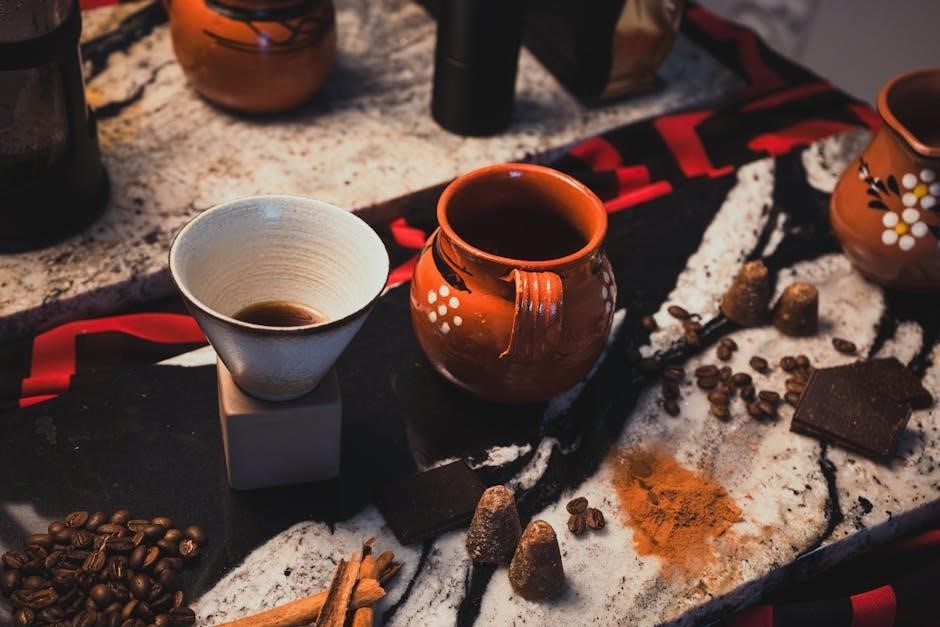
Chocolate pairings and flavor combinations elevate its richness by blending it with complementary ingredients. Classic pairings include nuts, caramel, and fruit, while adventurous combinations like citrus, spices, or even savory elements create unique taste experiences. Dark chocolate pairs exceptionally well with bold flavors such as espresso or chili, enhancing its bitterness. Milk chocolate, with its sweeter profile, complements creamy textures like vanilla or caramel. These combinations not only highlight chocolate’s versatility but also inspire culinary creativity. By experimenting with different flavors, chocolate becomes a canvas for innovation, offering endless possibilities for both traditional and modern desserts. This art of pairing transforms chocolate into a dynamic ingredient, ensuring its timeless appeal in the world of cuisine.

Sustainability and Ethical Practices
Exploring sustainable cocoa farming, fair trade practices, and ethical production methods, “The Chocolate Touch PDF” highlights the importance of eco-friendly approaches in the chocolate industry.
Fair Trade Chocolate
Fair trade chocolate ensures equitable prices, decent working conditions, and sustainable practices for cocoa farmers. This certification promotes transparency, empowering communities and reducing exploitation. By choosing fair trade, consumers support ethical practices, contributing to a more equitable global economy while enjoying high-quality chocolate. The fair trade movement addresses systemic inequalities in the chocolate industry, fostering long-term sustainability and social justice. It also encourages environmentally friendly farming methods, benefiting both farmers and the planet. Fair trade chocolate is not just a product but a commitment to making the world a fairer place, one bar at a time.
Environmental Impact of Chocolate Production
The production of chocolate has significant environmental implications, primarily due to deforestation, water pollution, and the use of pesticides in cocoa farming. Deforestation occurs as forests are cleared to make way for cocoa plantations, threatening biodiversity and ecosystems. Water resources are often contaminated by agricultural runoff, affecting local communities and wildlife. Additionally, the intensive use of pesticides can harm both the environment and the health of farmers. Addressing these issues requires sustainable farming practices, such as agroforestry and organic farming, to reduce environmental degradation. The chocolate industry must prioritize eco-friendly methods to mitigate its ecological footprint and ensure a sustainable future for cocoa production.
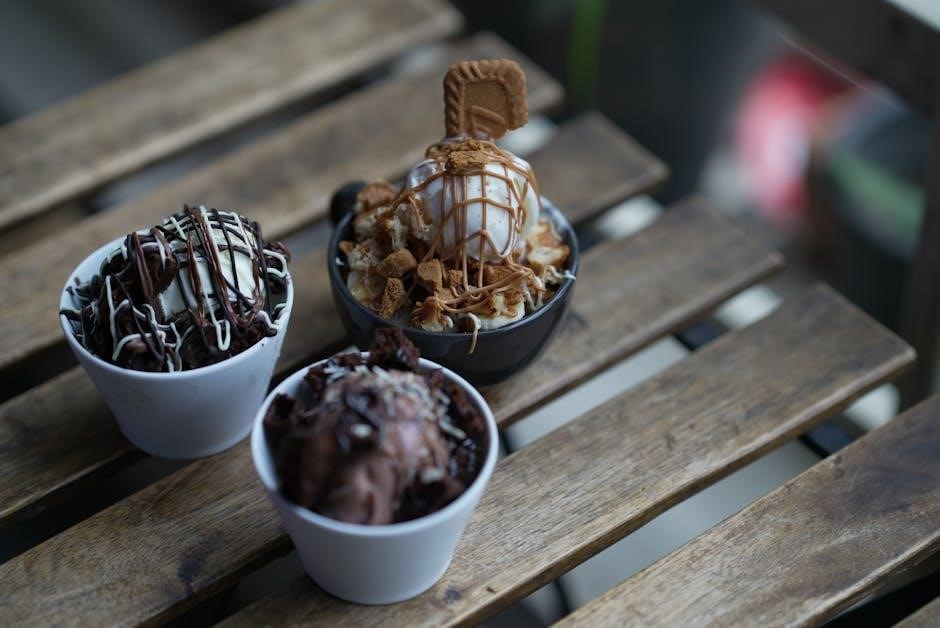
Sustainable Cocoa Farming
Sustainable cocoa farming focuses on eco-friendly practices that preserve the environment while ensuring fair livelihoods for farmers. Techniques like agroforestry, where cocoa is grown under a canopy of native trees, promote biodiversity and reduce deforestation. Shade-grown cocoa supports healthier ecosystems compared to monoculture plantations. Farmers are encouraged to use organic fertilizers and integrated pest management to minimize chemical use. Certification programs, such as Rainforest Alliance and Fairtrade, verify sustainable practices and connect farmers to global markets. These initiatives often provide training and resources to improve yields and resilience to climate change. By adopting sustainable methods, cocoa farming becomes more environmentally friendly and economically viable, ensuring a brighter future for both farmers and the planet.
Future of Chocolate
The future of chocolate lies in innovative production methods, sustainable practices, and evolving consumer preferences. Technology and ethical sourcing will shape the industry, ensuring a sweet and responsible tomorrow.
Innovations in Chocolate Production
Recent advancements in chocolate production are revolutionizing the industry. From 3D-printed chocolates to plant-based alternatives, innovation is driving sustainability and creativity. New technologies enhance flavor profiles and textures, while eco-friendly packaging reduces environmental impact. Vertical farming and precision agriculture optimize cocoa yields, ensuring a stable supply. Additionally, advancements in fermentation and roasting techniques improve quality and consistency. The integration of artificial intelligence in production streamlines processes, reducing waste and increasing efficiency. These innovations not only meet evolving consumer preferences but also address global challenges, paving the way for a sustainable and technologically advanced chocolate industry. The future of chocolate production is both exciting and transformative.
Chocolate in the Digital Age
The digital age has transformed how chocolate is experienced, marketed, and consumed. Online platforms and social media have become vital tools for chocolate brands to connect with consumers, showcasing unique flavors and ethical practices. Digital technologies, such as 3D printing and AI-driven production, are revolutionizing chocolate creation, enabling personalized and intricate designs. E-commerce has also surged, making artisanal and premium chocolates accessible worldwide. Additionally, digital storytelling highlights the journey from cocoa bean to bar, fostering transparency and consumer engagement. These innovations not only enhance the chocolate experience but also align with modern consumer demands for sustainability and customization, ensuring chocolate remains a beloved treat in the digital era.
Emerging Trends in Chocolate Consumption
Emerging trends in chocolate consumption highlight a shift toward premium, artisanal, and sustainable products. Consumers increasingly favor dark chocolate with high cocoa content for its health benefits, while unique flavor combinations, such as spicy or savory notes, gain popularity. The demand for vegan and dairy-free chocolates is rising, catering to diverse dietary preferences. Additionally, ethical and eco-conscious choices are influencing purchasing decisions, with Fair Trade and environmentally friendly packaging becoming key factors. Digital platforms also play a role, enabling direct-to-consumer sales and personalized subscription services. These trends reflect a growing appreciation for quality, sustainability, and innovation, reshaping how chocolate is enjoyed and perceived in modern times.
“The Chocolate Touch PDF” offers a rich exploration of chocolate’s history, cultural impact, and health benefits, concluding with a deeper appreciation for its timeless allure and versatility.
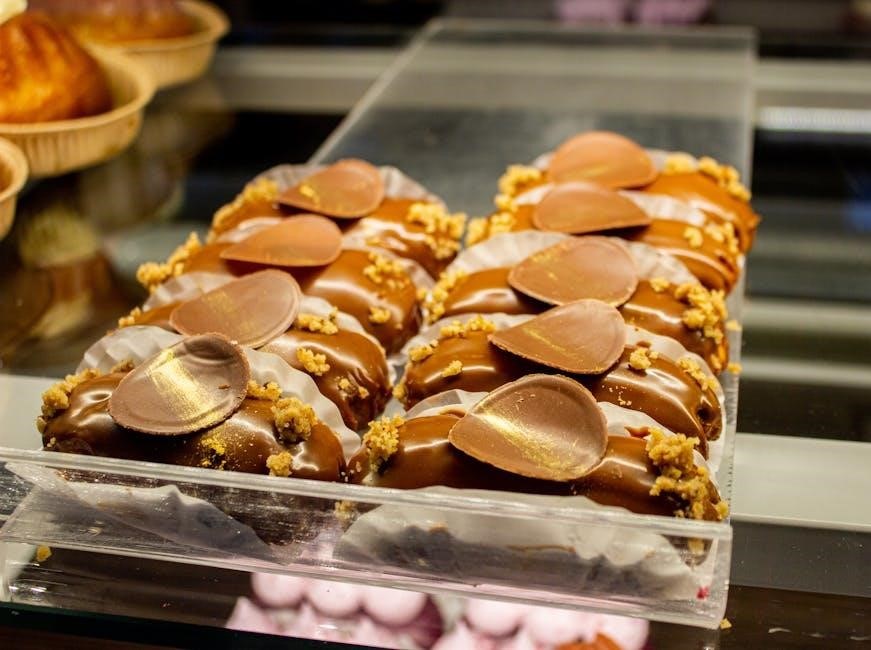
“The Chocolate Touch PDF” provides a comprehensive exploration of chocolate, covering its rich history, cultural significance, and health benefits. It delves into chocolate’s origins in ancient Mesoamerica, its role in rituals, and its evolution in global trade. The document highlights chocolate’s impact on modern cuisine, its symbolic meaning as a gift, and its influence in art and literature. Additionally, it explores the antioxidant properties of chocolate, its effects on heart health, and its role in brain function. The PDF also addresses culinary uses, sustainable practices, and future innovations in chocolate production, offering a well-rounded perspective on this beloved commodity.
Final Thoughts on “The Chocolate Touch PDF”
“The Chocolate Touch PDF” is a captivating and informative resource that delves into the multifaceted world of chocolate. From its ancient origins to its modern-day applications, the document provides a thorough exploration of chocolate’s cultural, historical, and culinary significance. It also sheds light on the health benefits and sustainable practices surrounding chocolate production. Whether you’re a chocolate enthusiast or simply curious, this PDF offers a rich and engaging experience. Its well-structured content ensures a seamless journey through the fascinating story of chocolate, making it a valuable read for anyone looking to deepen their understanding of this beloved treat.
